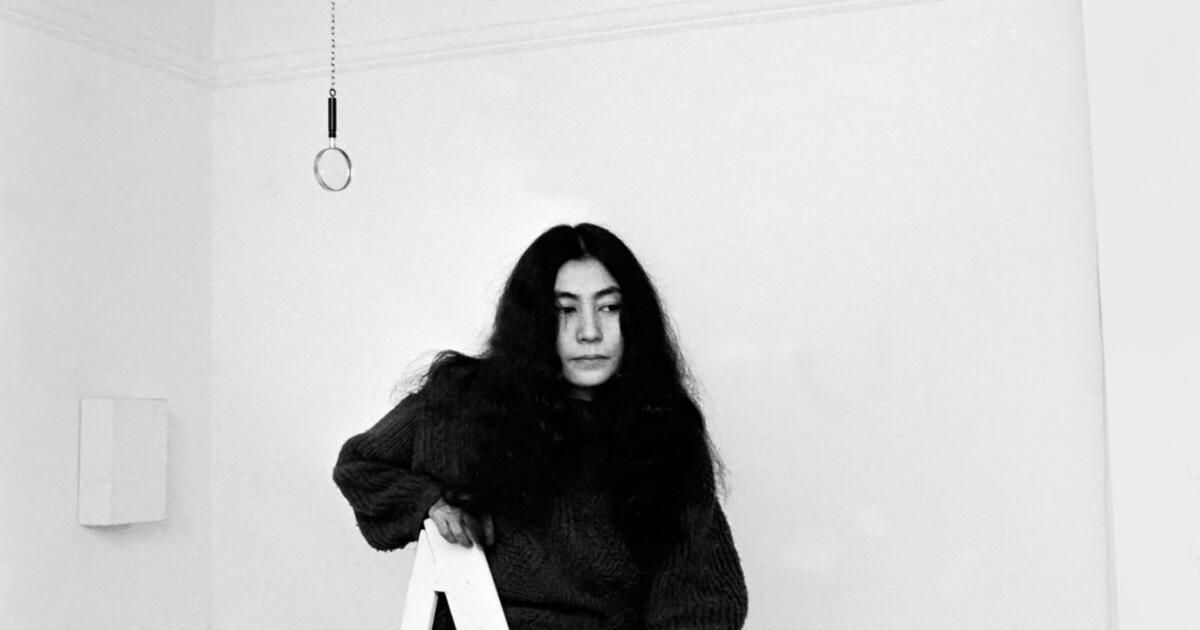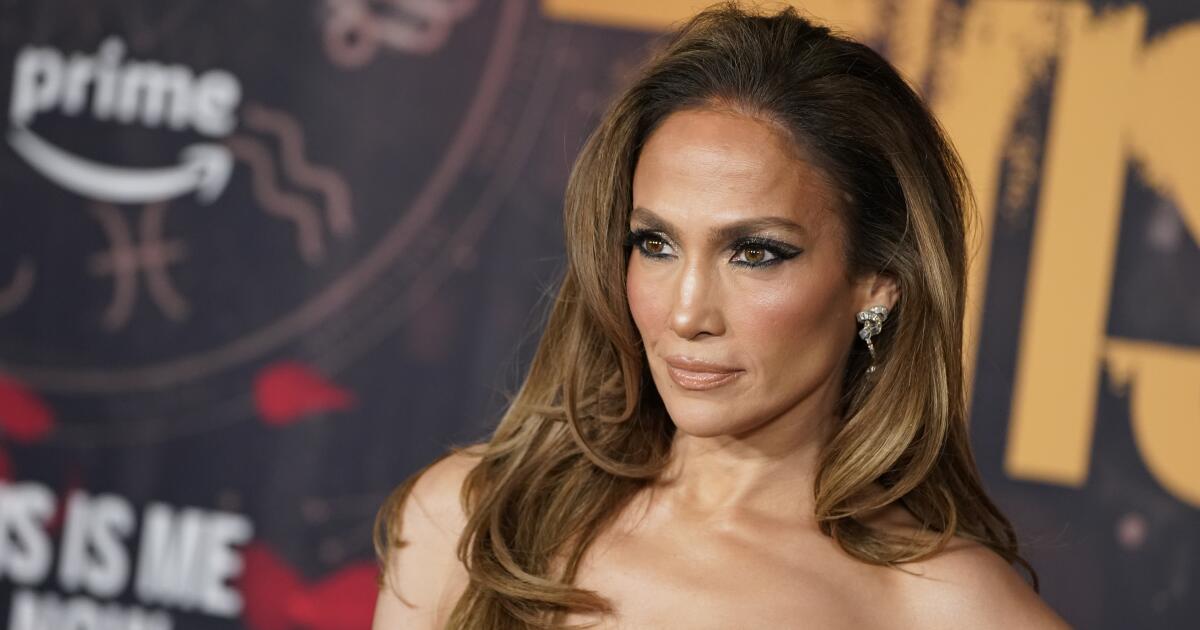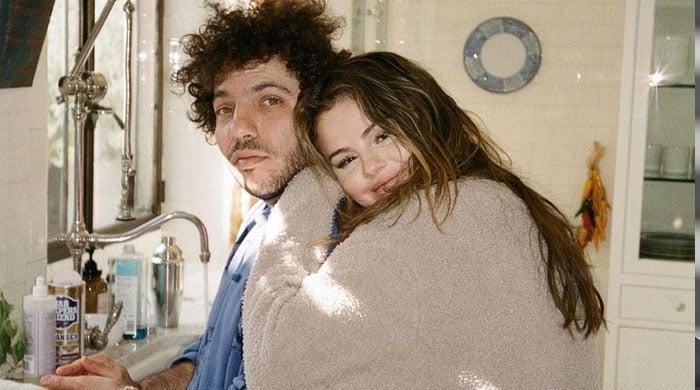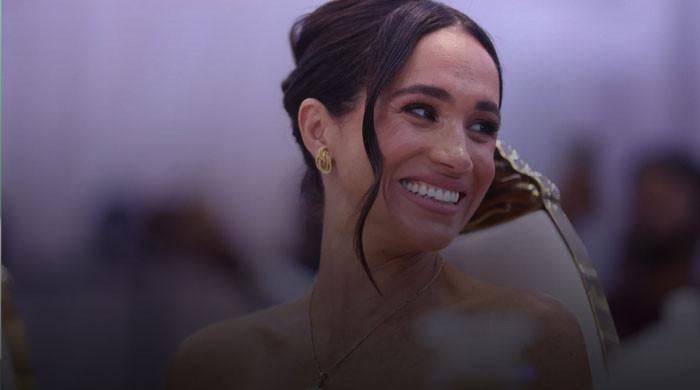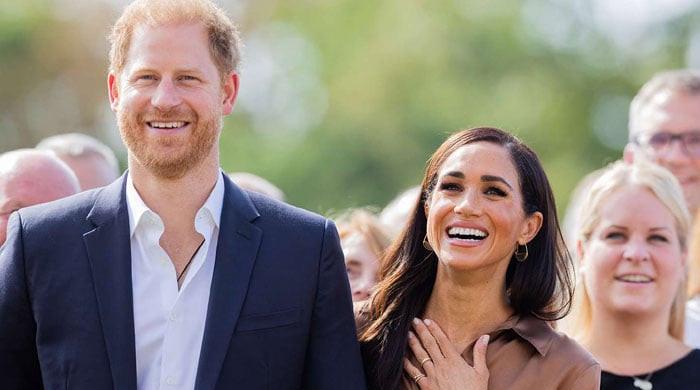Yoko Ono will present her first solo museum exhibition in Southern California at the Broad Museum this spring. The legendary artist, activist and wife of John Lennon, 92, will open her exhibition, “Yoko Ono: Music of the Mind,” on May 23. The interactive exhibition, organized in collaboration with London's Tate Modern, will run until October 11, 2026, the Broad announced Thursday.
One of the first things visitors will see when they approach the museum during the Ono exhibition will be an outdoor installation created from Broad's olive trees from its open-air plaza. These will be transformed into “wishing trees” for the city, a nod to an installation Ono first created in 1996 at the Shoshana Wayne Gallery in Santa Monica. Viewers will be invited to write wishes on tags and attach them to the branches.
Yoko Ono, “Peace is Power”, Tate Modern, Blavatnik Building, 2024.
(Oliver Cowling/Tate)
“Yoko's work has never been limited by place or time, but this really seems like the right time for a show like this in Los Angeles,” Ono studio head Connor Monahan wrote in an email. “His work transforms audiences from observers into participants, helping to shape the works and the exhibition itself. That sense of agency and connection feels especially powerful right now, and I think Los Angeles, with its spirit of experimentation and openness, will really embrace it.”
Ono has been a fascinating, beloved, and sometimes controversial force in the worlds of music, art, and pop culture since the early 1960s, when she became associated with New York's John Cage-inspired Fluxus movement, formed by a community of experimental artists who based their work on performance practice and avant-garde principles.
From the beginning, Ono's art was performative and interactive. He also drew on the trauma of living in Tokyo during World War II, an experience that would fuel his lifelong commitment to peace, love and understanding between people and communities.
Her positivity resonated with Lennon during their first meeting in 1966 at London's Indica Gallery, where Ono was mounting an exhibition of conceptual and interactive art. One of the pieces featured a ladder with a magnifying glass on top. When Lennon climbed the ladder and looked through the magnifying glass, he made out the word “yes,” written in small letters on a canvas attached to the ceiling.
“So it was positive. I was relieved. It's a huge relief when you go up the ladder and you look through the spyglass and it doesn't say 'no' or 'fuck you' or something, it says 'yes,'” Lennon said in an interview with People about his first meeting with Ono.

“Bed-In” at the Amsterdam Hilton, Netherlands, 1969.
(Henry Pessar/Yoko Ono)
“Yoko Ono's ideas about peace, imagination, and collective participation are timeless and newly urgent at a time when division seems to dominate every news cycle, and communities here and around the world are building with resilience toward a better future,” Joanne Heyler, Broad's founding director and president, said in an email. “The multidisciplinary and wide-ranging practice that began more than 70 years ago remains strikingly contemporary, as the boundaries between art, music and performance are, in its hands, challenged and reshaped, creating a new emotional connection.”
Heyler also noted that the museum rearranged its schedule to make room for Ono's exhibition in order to “quickly bring his current themes to Los Angeles.”
The Broad exhibition will feature interactive exhibits of Ono's “how-to” from the mid-1950s to the present. These pieces feature short texts that suggest actions for guests to complete or contemplate. Viewers will also see typewritten drafts of his 1964 book, “Grapefruit,” which includes more than 200 instructions in the form of music, painting, events, poetry and objects.
Ono's work as an activist will also be highlighted through materials and ephemera used in her peace campaigns, including protests held in collaboration with Lennon such as “Acorn Event” (1968) and “Bed Peace” (1969), in which the husband and wife organized bed events in Amsterdam and Montreal, where they sat on the bed and answered questions from the press in an effort to speak out against the Vietnam War.

“Cut Piece”, 1964, performed in “New Works of Yoko Ono”, Carnegie Hall, New York. Shot by David and Albert Maysles, film, 16mm, black and white, and sound (stereo), 8 min, 27 sec.
(Yoko Ono)
There will also be many films and videos in the exhibition, including images of “Cut Piece”, a legendary performance art work first presented in 1964 at Yamaichi Hall, Kyoto, in which Ono sat silently while the audience cut pieces of her clothing.
“With so many creatives calling it home, Los Angeles is the perfect place to honor Ono’s innovative practice and enduring vision,” Sarah Loyer, Broad curator and exhibition manager, wrote in an email. “Ono's work from the 1950s to today asks us to look at the world differently and find ways to make change, often starting within ourselves, toward peace. In Ono's work, personal stories and collective action come together in ways that I think will really resonate with Angelenos.”

